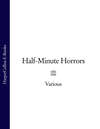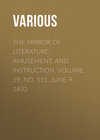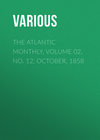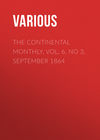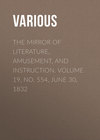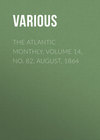Loe raamatut: «The Atlantic Monthly, Volume 06, No. 33, July, 1860», lehekülg 4
A LEGEND OF MARYLAND
"AN OWRE TRUE TALE."
The framework of modern history is, for the most part, constructed out of the material supplied by national transactions described in official documents and contemporaneous records. Forms of government and their organic changes, the succession of those who have administered them, their legislation, wars, treaties, and the statistics demonstrating their growth or decline,–these are the elements that furnish the outlines of history. They are the dry timbers of a vast old edifice; they impose a dry study upon the antiquary, and are still more dry to his reader.
But that which makes history the richest of philosophies and the most genial pursuit of humanity is the spirit that is breathed into it by the thoughts and feelings of former generations, interpreted in actions and incidents that disclose the passions, motives, and ambition of men, and open to us a view of the actual life of our forefathers. When we can contemplate the people of a past age employed in their own occupations, observe their habits and manners, comprehend their policy and their methods of pursuing it, our imagination is quick to clothe them with the flesh and blood of human brotherhood and to bring them into full sympathy with our individual nature.
History then becomes a world of living figures,–a theatre that presents to us a majestic drama, varied by alternate scenes of the grandest achievements and the most touching episodes of human existence.
In the composing of this drama the author has need to seek his material in many a tangled thicket as well as in many an open field. Facts accidentally encountered, which singly have but little perceptible significance, are sometimes strangely discovered to illustrate incidents long obscured and incapable of explanation. They are like the lost links of a chain, which, being found, supply the means of giving cohesion and completeness to the heretofore useless fragments. The scholar's experience is full of these reunions of illustrative incidents gathered from regions far apart in space, and often in time. The historian's skill is challenged to its highest task in the effort to draw together those tissues of personal and local adventure which, at first without seeming or suspected dependence, prove, when brought into their proper relationship with each other, to be unerring exponents of events of highest concern.
It is pleasant to fall upon the course of one of these currents of adventure,– to follow a solitary rivulet of tradition, such as by chance we now and then find modestly flowing along through the obscure coverts of time, and to be able to trace its progress to the confluence of other streams,–and finally to see it grow, by the aid of these tributaries, to the proportions of an ample river, which waters the domain of authentic history and bears upon its bosom a clear testimony to the life and character of a people.
The following legend furnishes a striking and attractive exemplification of such a growth, in the unfolding of a romantic passage of Maryland history, of which no annalist has ever given more than an ambiguous and meagre hint. It refers to a deed of bloodshed, of which the only trace that was not obliterated from living rumor so long as a century ago was to be found in a vague and misty relic of an old memory of the provincial period of the State. The facts by which I have been enabled to bring it to the full light of an historical incident, it will be seen in the perusal of this narrative, have successively, and by most curious process of development, risen into view through a series of accidental discoveries, which have all combined, with singular coincidence and adaptation, to furnish an unquestionable chapter of Maryland history, altogether worthy of recital for its intrinsic interest, and still more worthy of preservation for the elements it supplies towards a correct estimate of the troubles which beset the career and formed the character and manners of the forefathers of the State.
CHAPTER I.
TALBOT'S CAVE
It is now many years ago,–long before I had reached manhood,–that, through my intimacy with a friend, then venerable for his years and most attractive to me by his store of historical knowledge, I became acquainted with a tradition touching a strange incident that had reference to a mysterious person connected with a locality on the Susquehanna River near Havre de Grace. In that day the tradition was repeated by a few of the oldest inhabitants who dwelt in the region. I dare say it has now entirely run out of all remembrance amongst their descendants, and that I am, perhaps, the only individual in the State who has preserved any traces of the facts to which I allude.
There was, until not long ago, a notable cavern at the foot of a rocky cliff about a mile below the town of Port Deposit. It was of small compass, yet sufficiently spacious to furnish some rude shelter against the weather to one who might seek refuge within its solitary chamber. It opened upon the river just where a small brook comes brattling down the bank, along the base of a hill of some magnitude that yet retains the stately name of Mount Ararat. The visitor of this cavern might approach it by a boat from the river, or by a rugged path along the margin of the brook and across the ledges of the rock. This rough shelter went by the name of Talbot's Cave down to a very recent period, and would still go by that name, if it were yet in existence. But it happened, not many years since, that Port Deposit was awakened to a sudden notion of the value of the granite of the cliff, and, as commerce is a most ruthless contemner of all romance, and never hesitates between a speculation of profit and a speculation of history, Talbot's Cave soon began to figure conspicuously in the Price Current, and in a very little while disappeared, like a witch from the stage, in blasts of sulphur fire and rumbling thunder, under the management of those effective scene-shifters, the quarrymen. A government contract, more potent than the necromancy of the famed wizard Michael Scott, lifted this massive rock from its base, and, flying with it full two hundred miles, buried it fathoms below the surface of the Atlantic, at the Rip Raps, near Hampton Roads; and thus it happens that I cannot vouch the ocular proof of the Cave to certify the legend I am about to relate.
The tradition attached to this spot had nothing but a misty and spectral outline. It was indefinite in the date, uncertain as to persons, mysterious as to the event,–just such a tradition as to whet the edge of one's curiosity and to leave it hopeless of gratification. I may relate it in a few words.
Once upon a time, somewhere between one and two hundred years ago, there was a man by the name of Talbot, a kinsman of Lord Baltimore, who had committed some crime, for which he fled and became an outlaw and was pursued by the authorities of the Province. To escape these, he took refuge in the wilderness on the Susquehanna, where he found this cave, and used it for concealment and defence for some time,–how long, the tradition does not say. This region was then inhabited by a fierce tribe of Indians, who are described on Captain John Smith's map as the "Sasquesahannocks," and who were friendly to the outlaw and supplied him with provisions. To these details was added another, which threw an additional interest over the story,–that Talbot had a pair of beautiful English hawks, such as were most prized in the sport of falconry, and that these were the companions of his exile, and were trained by him to pursue and strike the wild duck that abounded, then as now, on this part of the river; and he thus found amusement to beguile his solitude, as well as sustenance in a luxurious article of food, which is yet the pride of gastronomic science, and the envy of bons vivants throughout this continent.
These hawks my aged friend had often himself seen, in his own boyish days, sweeping round the cliffs and over the broad expanse of the Susquehanna. They were easily distinguished, he said, by the residents of that district, by their peculiar size and plumage, being of a breed not known to our native ornithology, and both being males. For many years, it was affirmed,–long after the outlaw had vanished from the scene,–these gallant old rovers of the river still pursued their accustomed game, a solitary pair, without kindred or acquaintance in our woods. They had survived their master,–no one could tell how long,–but had not abandoned the haunts of his exile. They still for many a year saw the wilderness beneath their daily flight giving place to arable fields, and learned to exchange their wary guard against the Indian's arrow for a sharper watch of the Anglo-Saxon rifle. Up to the last of their appearance the country-people spoke of them as Talbot's hawks.
This is a summary of the story, as it was told to me. No inquiry brought me any addition to these morsels of narrative. Who this Talbot was,–what was his crime,–how long he lived in this cave, and at what era,–were questions upon which the oracle of my tradition was dumb.
Such a story would naturally take hold of the fancy of a lover of romance, and kindle his zeal for an enterprise to learn something more about it; and I may reasonably suppose that this short sketch has already stirred the bosoms of the novel-reading portion, at least, of my readers with a desire that I should tell them what, in my later researches, I have found to explain this legend of the Cave. Even the outline I have given is suggestive of inferences to furnish quite a plausible chapter of history.
First, it is clear, from the narrative, that Talbot was a gentleman of rank in the old Province,–for he was kinsman to the Lord Proprietary; and there is one of the oldest counties of Maryland that bears the name of his family,– perhaps called so in honor of himself. Then he kept his hawks, which showed him to be a man of condition, and fond of the noble sport which figures so gracefully in the annals of Chivalry.
Secondly, this hawking carries the period of the story back to the time of one of the early Lords Baltimore; for falconry was not common in the eighteenth century: and yet the date could not have been much earlier than that century, because the hawks had been seen by old persons of the last generation somewhere about the period of our Revolution; and this bird does not live much over a hundred years. So we fix a date not far from sixteen hundred and eighty for Talbot's sojourn on the river.
Thirdly, the crime for which he was outlawed could scarcely have been a mean felony, perpetrated for gain, but more likely some act of passion,–a homicide, probably, provoked by a quarrel, and enacted in hot blood. This Talbot was too well conditioned for a sordid crime; and his flight to the wilderness and his abode there would seem to infer a man of strong purpose and self-reliance.
And, lastly, as he must have had friends and confederates on the frontier, to aid him in his concealment, and to screen him from the pursuit of the government officers, and, moreover, had made himself acceptable to the Indians, to whose power he had committed himself, we may conclude that he possessed some winning points of character; and I therefore assume him to have been of a brave, frank, and generous nature, capable of attracting partisans and enlisting the sympathies and service of bold men for his personal defence.
So, with the help of a little obvious speculation, founded upon the circumstantial evidence, we weave the network of quite a natural story of Talbot; and our meagre tradition takes on the form, and something of the substance, of an intelligible incident.
CHAPTER II.
STRANGE REVELATIONS
At this point I leave the hero of my narrative for a while, in order that I may open another chapter.
Many years elapsed, during which the tradition remained in this unsatisfactory state, and I had given up all hope of further elucidation of it, when an accidental discovery brought me once more upon the track of inquiry.
There was published in the city of Baltimore, in the year 1808, a book whose title was certainly as little adapted to awaken the attention of one in quest of a picturesque legend as a treatise on Algebra. It was called "The Landholder's Assistant," and was intended, as its name imported, to assist that lucky portion of mankind who possessed the soil of Maryland in their pursuit of knowledge touching the mysteries of patents, warrants, surveys, and such like learning, necessary to getting land or keeping what they had. The character and style of this book, in its exterior aspect, were as unpromising as it's title. It was printed by Messrs. Dobbin & Murphy, on rather dark paper, in a muddy type,– such as no Mr. Dobbin nor Mr. Murphy of this day would allow to bear his imprimatur,–though in 1808, I doubt not, it was considered a very creditable piece of Baltimore typography. This unpretending volume was compiled by Chancellor Kilty. It is a very instructive book, containing much curious matter, is worthy of better adornment in the form of its presentation to the world, and ought to have a title more suggestive of its antiquarian lore. I should call it "Fossil Remains of Old Maryland Law, with Notes by an Antiquary."
It fell into my hands by a purchase at auction, some twenty years after I had abandoned the Legend of the Cave and the Hawks as a hopeless quest. In running over its contents, I found that a Colonel George Talbot was once the Surveyor- General of Maryland; and in two short marginal notes (the substance of which I afterwards found in Chalmers's "Annals") it was said that "he was noted in the Province for the murder committed by him on Christopher Rousby, Collector of the Customs,"–the second note adding that this was done on board a vessel in Patuxent River, and that Talbot "was conveyed for trial to Virginia, from whence he made his escape; and after being retaken, and" (as the author expresses his belief) "tried and convicted, was finally pardoned by King James the Second."
These marginal notes, though bringing no clear support to the story of the Cave, were embers, however, of some old fire not entirely extinct,–which emitted a feeble gleam upon the path of inquiry. The name of the chief actor coincided with that of the tradition; the time, that of James the Second, conformed pretty nearly to my conjecture derived from the age of the hawks; and the nature of the crime was what I had imagined. There was just enough in this brief revelation to revive the desire for further investigation. But where was the search to be made? No history that I was aware of, no sketch of our early time that I had ever seen, nothing in print was known to be in existence that could furnish a clue to the story of the Outlaw's Cave.
And here the matter rested again for some years. But after this lapse, chance brought me upon the highway of further development, which led me in due time to a strange realization of the old proverb that "Murder will out,"–though, in this case, its discovery could bring no other retribution than the settlement of an historical doubt, and give some posthumous fame to the subject of the disclosure.
In the month of May, 1836, I had a motive and an opportunity to make a visit to the County of St. Mary's. I had been looking into the histories of our early Maryland settlement, as they are recounted in the pages of Bozman, Chalmers, and Grahame, and found there some inducements to persuade me to make an exploration of the whereabouts of the old city which was planted near the Potomac by our first pilgrims. Through the kindness of a much valued friend, whose acquirements and taste–both highly cultivated–rendered him a most effective auxiliary in my enterprise, I was supplied with an opportunity to spend a week under the hospitable roof of Mr. Carberry, the worthy Superior of the Jesuit House of St. Inigoes on the St. Mary's River, within a short distance of the plain of the ancient city.
Mr. Campbell and myself were invited by our host to meet him, on an appointed day, at the Church of St. Nicholas on the Patuxent, near the landing at Town Creek, and we were to travel from there across to St. Inigoes in his carriage,– a distance of about fifteen miles.
Upon our arrival at St. Nicholas, we found a full day at our disposal to look around the neighborhood, which, being the scene of much historical interest in our older annals, presented a pleasant temptation to our excursion. Our friendly guide, Mr. Carberry, took us to Drum Point, the southern headland of the Patuxent at its entrance into Chesapeake Bay. Here was, at that time, and perhaps still is, the residence of the Carroll family, whose ancestors occupied the estate for many generations. The dwelling-house was a comfortable wooden building of the style and character of the present day, with all the appurtenances proper to a convenient and pleasant country homestead. Immediately in its neighborhood–so near that it might be said to be almost within the curtilage of the dwelling–stood an old brick ruin of what had apparently been a substantial mansion-house. Such a monument of the past as this, of course, could not escape our special attention, and, upon inquiry, we were told that it was once, a long time ago, the family home of the Rousbys, the ancestors of the present occupants of the estate; that several generations of this family, dating back to the early days of the Province, had resided in it; and that when it had fallen into decay, the modern building was erected, and the old one suffered to crumble into the condition in which we saw it. I could easily understand and appreciate the sentiment that preserved it untouched as part and parcel in the family associations of the place, and as a relic of the olden time which no one was willing to disturb.
The mention of the name of the Rousbys, here on the Patuxent River, was a sudden and vivid remembrancer to me of the old story of Talbot, and gave new encouragement to an almost abandoned hope of solving this mystery.
CHAPTER III.
A GRAVEYARD AND AN EPITAPH
Within a short distance of this spot, perhaps not a mile from Drum Point, there is a small creek which opens into the river and bears the name of Mattapony. In early times there was a notable fort here, and connected with it a stately mansion, built by Charles Calvert, Lord Baltimore, for his own occasional residence. The fort and mansion are often mentioned in the Provincial records as the place where the Council sometimes met to transact business; and accordingly many public acts are dated from Mattapony.
Calvert was doubtless attracted to this spot by the pleasant scenery of the headland which here looks out upon the noble water-view of the Chesapeake, and by its breezy position as an agreeable refuge from the heats of summer.
Our party, therefore, determined to set out upon a search for some relics of the mansion and fort; and as a guide in this enterprise, we engaged an old negro who seemed to have a fair claim in his own conceit to be regarded both as the Solomon and the Methuselah of the plantation. He was a wrinkled, wise-looking old fellow, with a watery eye and a grizzled head, and might, perhaps, have been about eighty; but, from his own account, he left us to infer that he was not much behind that great patriarch of Scripture whose years are described as one hundred and threescore and fifteen.
Finding that he was native to the estate, and had lived here all his life, we interrogated him with some confidence in his ability to contribute something useful to the issue of our pursuit. Amongst all the Solomons of this world, there is not one so consciously impressed with the unquestionable verity of his wisdom and the intensity of his knowledge as one of these veterans of an old family-estate upon which he has spent his life. He is always an aristocrat of the most uncompromising stamp, and has a contemptuous disdain and intolerance for every form of democracy. Poor white people have not the slightest chance of his good opinion. The pedigree and history of his master's family possess an epic dignity in his imagination; and the liberty he takes with facts concerning them amounts to a grand poetical hyperbole. He represents their wealth in past times to have amounted to something of a fabulous superfluity, and their magnificence so unbounded, that he stares at you in describing it, as if its excess astonished himself.
When we now questioned our venerable conductor, to learn what he could tell us of the old Proprietary Mansion, he said, in his way, he "membered it, as if it was built only yesterday: he was fotch up so near it, that he could see it now as if it was standing before him: if he couldn't pint out where it stood, it was time for him to give up: it was a mighty grand brick house,"– laying an emphasis on brick, as a special point in his notion of its grandeur; and then he added, with all the gravity of which his very solemn visage was a copious index, that "Old Master Baltimore, who built it, was a real fine gentleman. He knowed him so well! He never gave anything but gold to the servants for tending on him. Bless you! he wouldn't even think of silver! Many a time has he given me a guinea for waiting on him."
This account of Old Master Baltimore, and his magnificent contempt of silver, and the intimacy of our patriarch with him, rather startled us, and I began to fear that the story of the house might turn out to be as big a lie as the acquaintance with the Lord Proprietary,–for Master Baltimore had then been dead just one hundred and twenty-one years. But we went on with him, and were pleasantly disappointed when he brought us upon a hill that sloped down to the Mattapony, and there traced out for us, by the depression of the earth, the visible lines of an old foundation of a large building, the former existence of which was further demonstrated by some scattered remains of the old imported brick of the edifice which were imbedded in the soil.
This spot had a fine outlook upon the Bay, and every advantage of locality to recommend its choice for a domestic establishment. We could find nothing to indicate the old fort except the commanding character of the hill with reference to the river, which might warrant a conjecture as to its position. I believe that the house was included within the ramparts of the fortification, as I perceive in some of the old records that the fortification itself was called the Mattapony House, which was once beleaguered and taken by Captain John Coode and Colonel Jowles.
After we had examined all that was to be seen here, our next point of interest was a graveyard, which, we had been informed by some of the household at Mrs. Carroll's, had been preserved upon the estate from a very early period. Our old gossip professed to know all about this, from its very first establishment. It was in another direction from the mansion-house, about a mile distant, on the margin of an inlet from the Bay, called Harper's Creek; and thither we accordingly went. Before we reached the spot, the old negro stopped at a cabin that lay in our route and provided himself with a hoe, which, borne upon his shoulder, gave a somewhat mysterious significance to the office he had assumed. He did not explain the purpose of this equipment to us, and we forbore to question him. After descending to the level of the tide and passing through some thickets of wild shrubbery, we arrived upon a grassy plain immediately upon the border of the creek; and there, in a quiet, sequestered nook of rural landscape, the smooth and sluggish little inlet begirt with waterlilies and reflecting wood and sky and the green hill-side upon its surface, was the chosen resting-place of the departed generations of the family. A few simple tombstones–some of them darkened by the touch of Time–lay clustered within an old inclosure. The brief memorials engraved upon them told us how inveterately Death had pursued his ancient vocation and gathered in his relentless tribute from young and old in times past as he does to-day.
Here was a theme for a sermon from the patriarch, who now leaned upon his hoe and shook his head with a slow ruminative motion, as if he hoped by this action to disengage from it some profound moral reflections, and then began to enumerate how many of these good people he had helped to bury; but before he had well begun this discourse we had turned away and were about leaving the place, when he recalled us by saying, "I have got one tombstone yet to show you, as soon as I can clear it off with the hoe: it belongs to old Master Rousby, who was stobbed aboard ship, and is, besides that, the grandest tombstone here."
Here was another of those flashes of light by which my story seemed to be preordained to a prosperous end. We eagerly encouraged the old man to this task, and he went to work in removing the green sod from a large slab which had been entirely hidden under the soil, and in a brief space revealed to us a tombstone fully six feet long, upon which we were able to read, in plainly chiselled letters, an inscription surmounted by a carved heraldic shield with its proper quarterings and devices.
Our group at this moment would have made a fine artistic study. There was this quiet landscape around us garnished with the beauty of May; there were the rustic tombs,–the old negro, with a countenance surcharged with the expression of solemn satisfaction at his employment, bending his aged figure over the broad, carved stone, and scraping from it the grass which had not been disturbed perhaps for a quarter of a century; and there was our own party looking on with eager interest, as the inscription every moment became more legible. That interest may be imagined, on reading the inscription, which, when brought to the full light of day, revealed these words:–
"Here lyeth the body of Xph'r Rousbie Esquire, who was taken out of this world by a violent death received on board his Majesty's ship The Quaker Ketch, Capt. Tho's. Allen Commander, the last day of October 1684. And also of Mr. John Rousbie, his brother, who departed this naturall life on board the Ship Baltimore, being arrived in Patuxen the first day of February 1685."
This was a picturesque incident in its scenic character, but a still more engaging one as an occurrence in the path of discovery. Here was most unexpectedly brought to view a new link in the chain of our story. It was a pleasant surprise to have such a fact as this breaking upon us from an ambuscade, to help out a half-formed narrative which I had feared was hopeless of completion. The inscription is a necessary supplement to the marginal notes. As an insulated monument, it is meagre in its detail, and stands in need of explanation. It does not describe Christopher Rousby as the Collector of the Customs; it does not affirm that he was murdered; it makes no allusion to Talbot: but it gives the name of the ship and its commander, along with the date of the death. "The Landholder's Assistant" supplies all the facts that are wanting in this brief statement. These two memorials help each other and enlarge the common current of testimony, like two confluent streams coming from opposite sources. From the two together we learn, that Colonel Talbot, the Surveyor- General in 1684, killed Mr. Christopher Rousby on board of a ship of war; and we are apprised that Rousby was a gentleman of rank and authority in the Province, holding an important commission from the King. The place at which the tomb is found shows also that he was the owner of a considerable landed estate and a near neighbor of the Lord Proprietary.
The story, however, requires much more circumstance to give it the interest which we hope yet to find in it.











